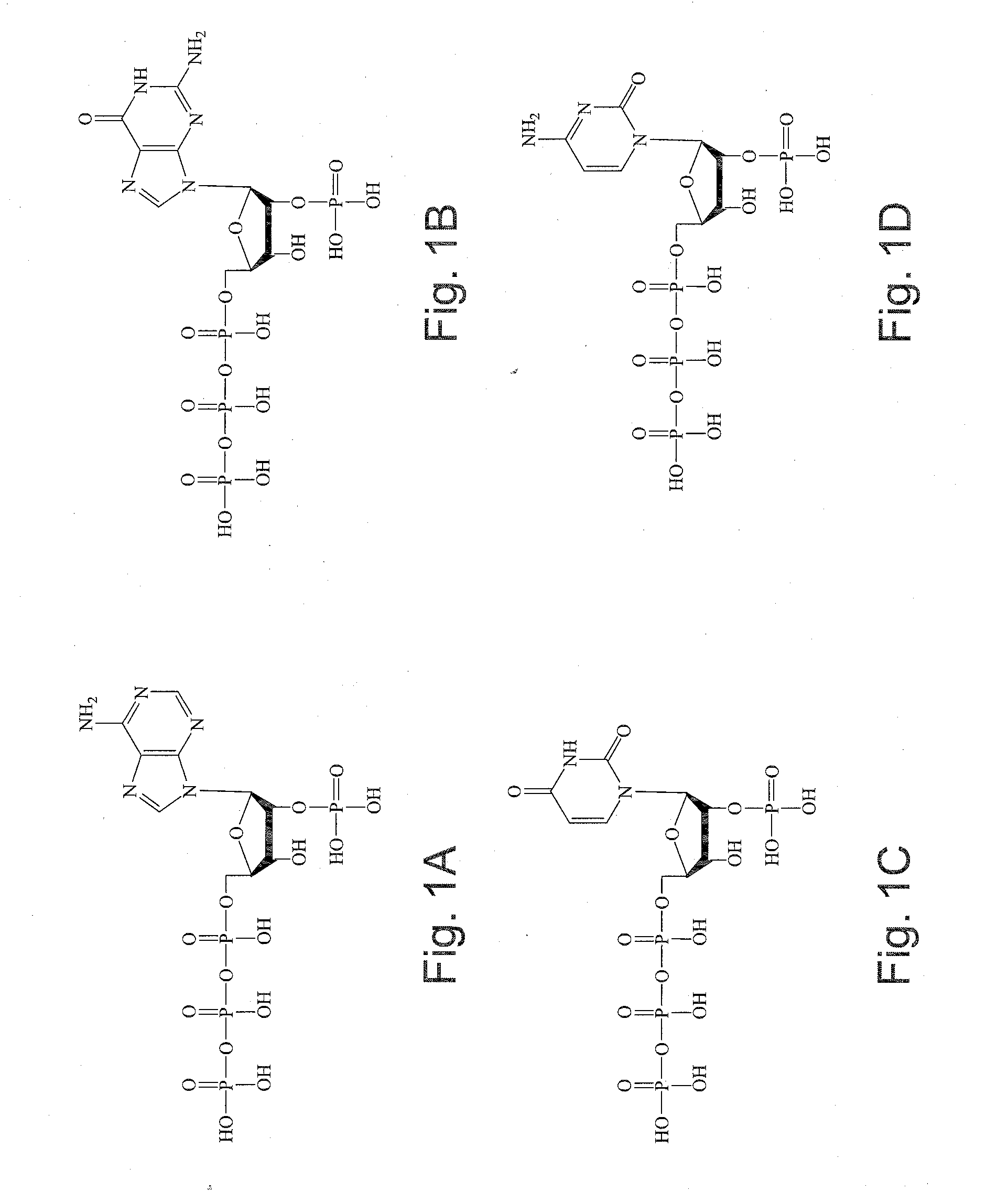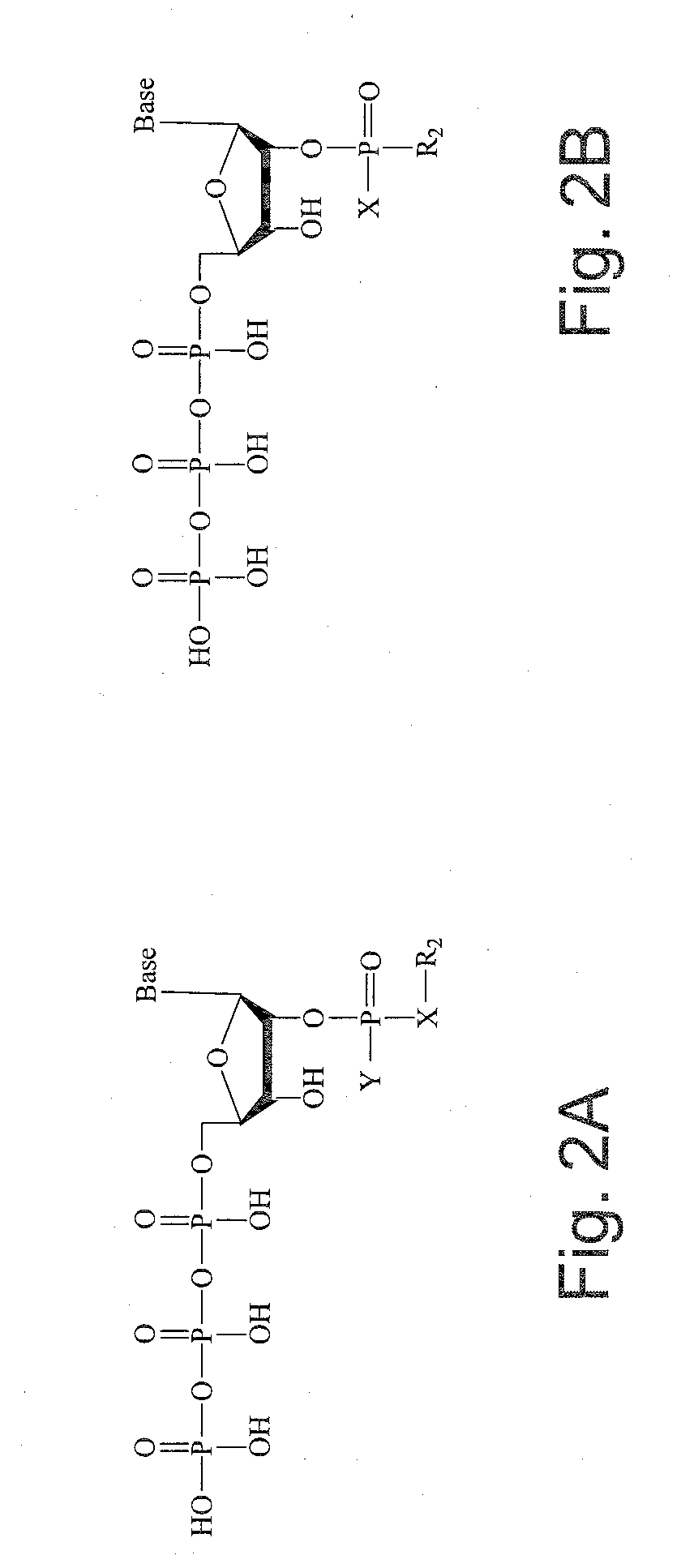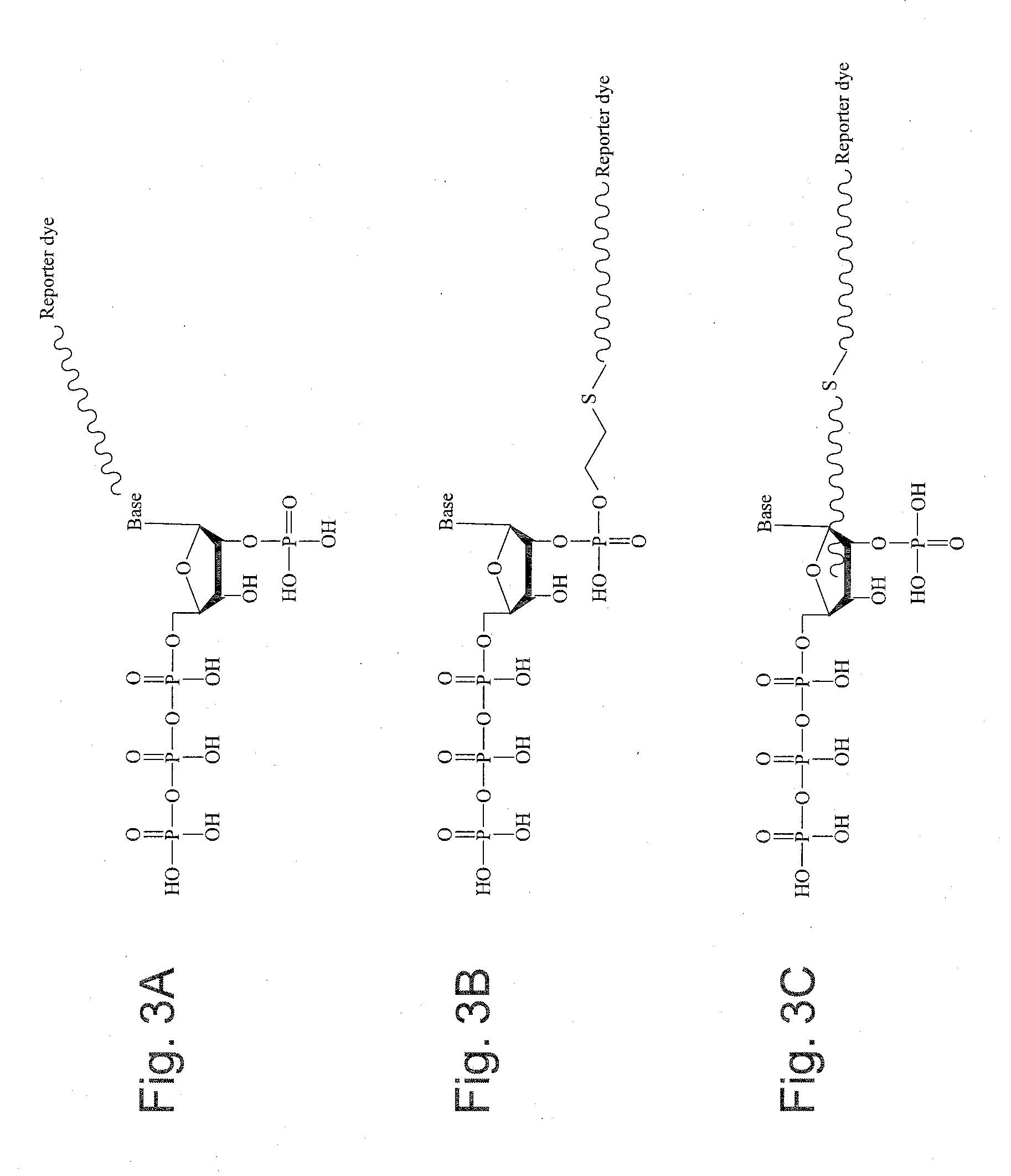2'-Terminator Nucleotide-Related Methods and Systems
a technology of 2'-terminator nucleotide and related methods, which is applied in the field of nucleic acid chemistry and molecular biology, can solve the problems of inability of nucleotide analogs to support further chain extension and the expense of making ddntps
- Summary
- Abstract
- Description
- Claims
- Application Information
AI Technical Summary
Benefits of technology
Problems solved by technology
Method used
Image
Examples
example 1
VIII. Example 1
Automated Cycle DNA Sequencing Using a Modified Thermostable DNA Polymerase and Fluorescent Primers
[0180]This example illustrates the application of the 2′-terminator nucleotides of the invention to automated dye primer cycle DNA sequencing. In particular, an M13 mp18 DNA template was sequenced using ribonucleoside 2′-monophosphate 5′-triphosphates.
[0181]Cycle sequencing reactions were performed with G46E E678G CS5 DNA polymerase (referred to above) modified for the incorporation of ribonucleotide analogs, dye primers, and ribonucleoside 2′-monophosphate 5′-triphosphate analogs. Reactions consisted of 50 mM Tricine pH 8.5; 40 mM KOAc; 4 mM Mg(OAc)2; 100 μM each dATP, dCTP, dTTP; 150 μM c7dGTP; 0.5 unit / μl G46E E678G CS5 DNA polymerase; 1.0 unit / μl rTth Thermostable Pyrophosphatase; and 20 ng / μl M13 mp18 template. Four individual reactions, one for each base were performed. Reactions for each of the bases contained the above plus the following reagents:
[0182]Adenosine ...
example 2
IX. Example 2
Cycled DNA Primer Extension Using a Modified Thermostable DNA Polymerase and Dye-Labeled Ribonucleoside 2′-Monophosphate 5′-Triphosphate
[0197]A thermal cycled primer extension reaction was performed with G46E E678G CS5 DNA polymerase modified for the incorporation of ribonucleotide analogs, unlabeled primer, and TAMRA dye-labeled uridine 2′-monophosphate 5′-triphosphate. The 20 μl reaction consisted of 50 mM Tricine pH 7.5; 25 mM KOAc; 2.5 mM Mg(OAc)2; 100 μM each dATP, dCTP, and dTTP; 150 μM dITP; 0.5 unit / μl G46E E678G CS5 DNA polymerase; 1.0 unit / μl rTth Thermostable inorganic pyrophosphatase; 5 ng / μl M13 mp18 template; 0.15 μM primer; and 0.25 μM TAMRA-uridine 2′-phosphate 5′-triphosphate.
[0198]A control reaction was performed with AmpliTaq DNA polymerase, FS, unlabeled primer and TAMRA dye-labeled ddTTP. The 20 μl reaction consisted of 50 mM Tris pH 9; 2 mM MgCl2; 100 μM each dATP, dCTP, and dTTP; 150 μM dITP; 0.5 unit / μl AmpliTaq DNA polymerase, FS; 1.0 unit / μl rT...
PUM
| Property | Measurement | Unit |
|---|---|---|
| Temperature | aaaaa | aaaaa |
| Electrical conductance | aaaaa | aaaaa |
| Dynamic viscosity | aaaaa | aaaaa |
Abstract
Description
Claims
Application Information
 Login to View More
Login to View More - R&D
- Intellectual Property
- Life Sciences
- Materials
- Tech Scout
- Unparalleled Data Quality
- Higher Quality Content
- 60% Fewer Hallucinations
Browse by: Latest US Patents, China's latest patents, Technical Efficacy Thesaurus, Application Domain, Technology Topic, Popular Technical Reports.
© 2025 PatSnap. All rights reserved.Legal|Privacy policy|Modern Slavery Act Transparency Statement|Sitemap|About US| Contact US: help@patsnap.com



